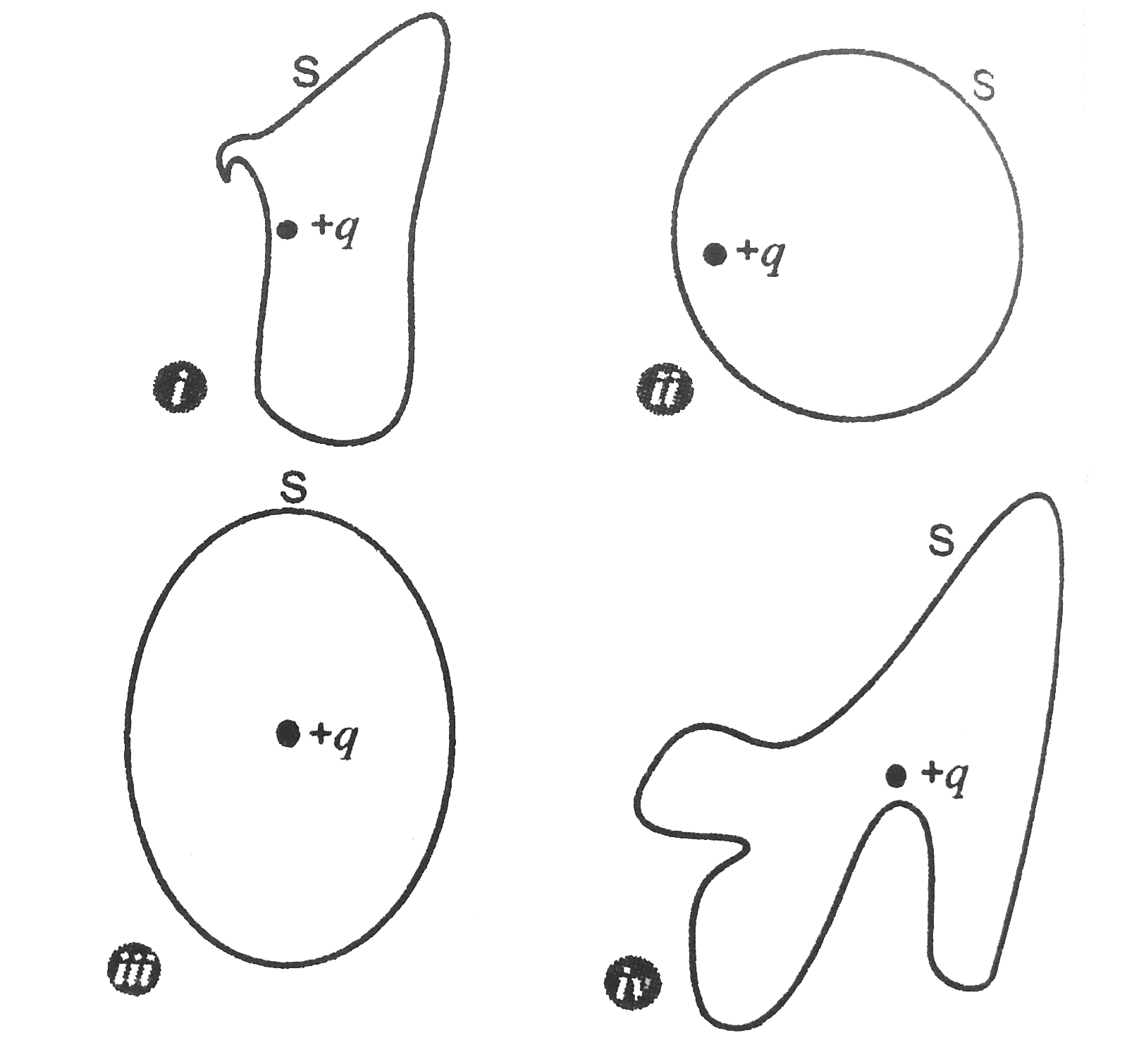If the flux of the electric field through a closed surface is zero ,
(i) the electric field must be zero everywhere on the surface
(ii) the electric field may be zero everywhere on the surface
(iii) the charge inside the surface must be zero
(iv) the charge in the vicinity of the surface must be zero
To solve the question, we need to analyze the implications of the electric flux being zero through a closed surface. The electric flux (Φ) through a closed surface is given by Gauss's law:
Φ=Qencϵ0
where Qenc is the total charge enclosed within the surface and ϵ0 is the permittivity of free space.
1. Understanding Electric Flux:
The electric flux through a closed surface is a measure of the number of electric field lines passing through that surface. According to Gauss's law, this flux is proportional to the charge enclosed within the surface.
2. Given Condition:
We are given that the flux through the closed surface is zero:
Φ=0
3. Applying Gauss's Law:
From Gauss's law, if the flux is zero, we can write:
Qencϵ0=0
This implies:
Qenc=0
Therefore, the total charge enclosed within the closed surface must be zero.
4. Analyzing the Electric Field:
The electric field can still exist even if the total charge enclosed is zero. For example, consider a dipole (two equal and opposite charges) placed inside the closed surface. The net charge is zero, but the electric field is not zero at points on the surface.
5. Conclusion:
- (i) The electric field must be zero everywhere on the surface: False. The electric field can be non-zero even if the flux is zero.
- (ii) The electric field may be zero everywhere on the surface: True. It is possible for the electric field to be zero, but it is not necessary.
- (iii) The charge inside the surface must be zero: True. This follows directly from Gauss's law.
- (iv) The charge in the vicinity of the surface must be zero: False. Charges outside the surface can still exist without affecting the enclosed charge.
Final Answer:
The correct options are (ii) and (iii).
The electric flux through a closed surface is a measure of the number of electric field lines passing through that surface. According to Gauss's law, this flux is proportional to the charge enclosed within the surface.
We are given that the flux through the closed surface is zero:
Φ=0
From Gauss's law, if the flux is zero, we can write:
Qencϵ0=0
This implies:
Qenc=0
Therefore, the total charge enclosed within the closed surface must be zero.
The electric field can still exist even if the total charge enclosed is zero. For example, consider a dipole (two equal and opposite charges) placed inside the closed surface. The net charge is zero, but the electric field is not zero at points on the surface.
- (i) The electric field must be zero everywhere on the surface: False. The electric field can be non-zero even if the flux is zero.
- (ii) The electric field may be zero everywhere on the surface: True. It is possible for the electric field to be zero, but it is not necessary.
- (iii) The charge inside the surface must be zero: True. This follows directly from Gauss's law.
- (iv) The charge in the vicinity of the surface must be zero: False. Charges outside the surface can still exist without affecting the enclosed charge.
The correct options are (ii) and (iii).
Similar Questions
The electric flux through the surface

View SolutionThe electric flux through the surface

View SolutionThe electric flux through the surface

View SolutionIf the total charge enclosed by a surface is zero, does it imply that the electric field everywhere on the surface is zero ? Conversely, if the electric field everywhere on a surface is zero, does it imply that net charge inside is zero.
View SolutionElectric flux over a surface in an electric field
View SolutionWhy the electric field at the outer surface of a hollow charged conductor is normal to the surface?
View SolutionThe surface density on a copper sphere is σ. The electric field strength on the surface of the sphere is
View SolutionThe position of the point where the net electric field will be zero is

View SolutionIf a chraged particle at rest experiences no electromagnetic force,
(i) the electric field must be zero
(ii) the magnetic field must be zero
(iii) the electric field may or may not be zero
(iv) the magnetic field may or may not be zero
View SolutionIf a charged particle at rest experiences no electromagnetic force, then
The electric field must be zero
View Solution
